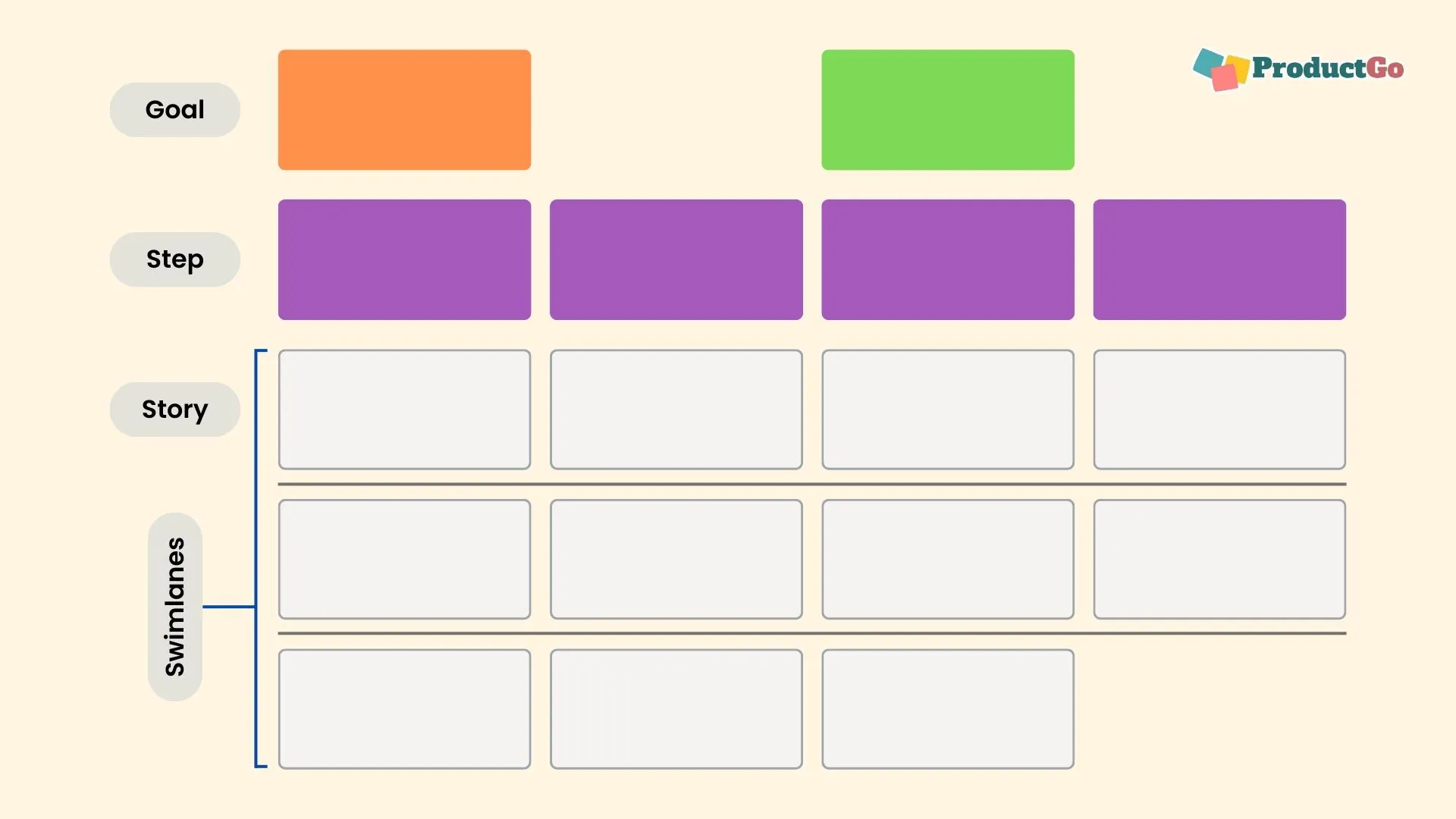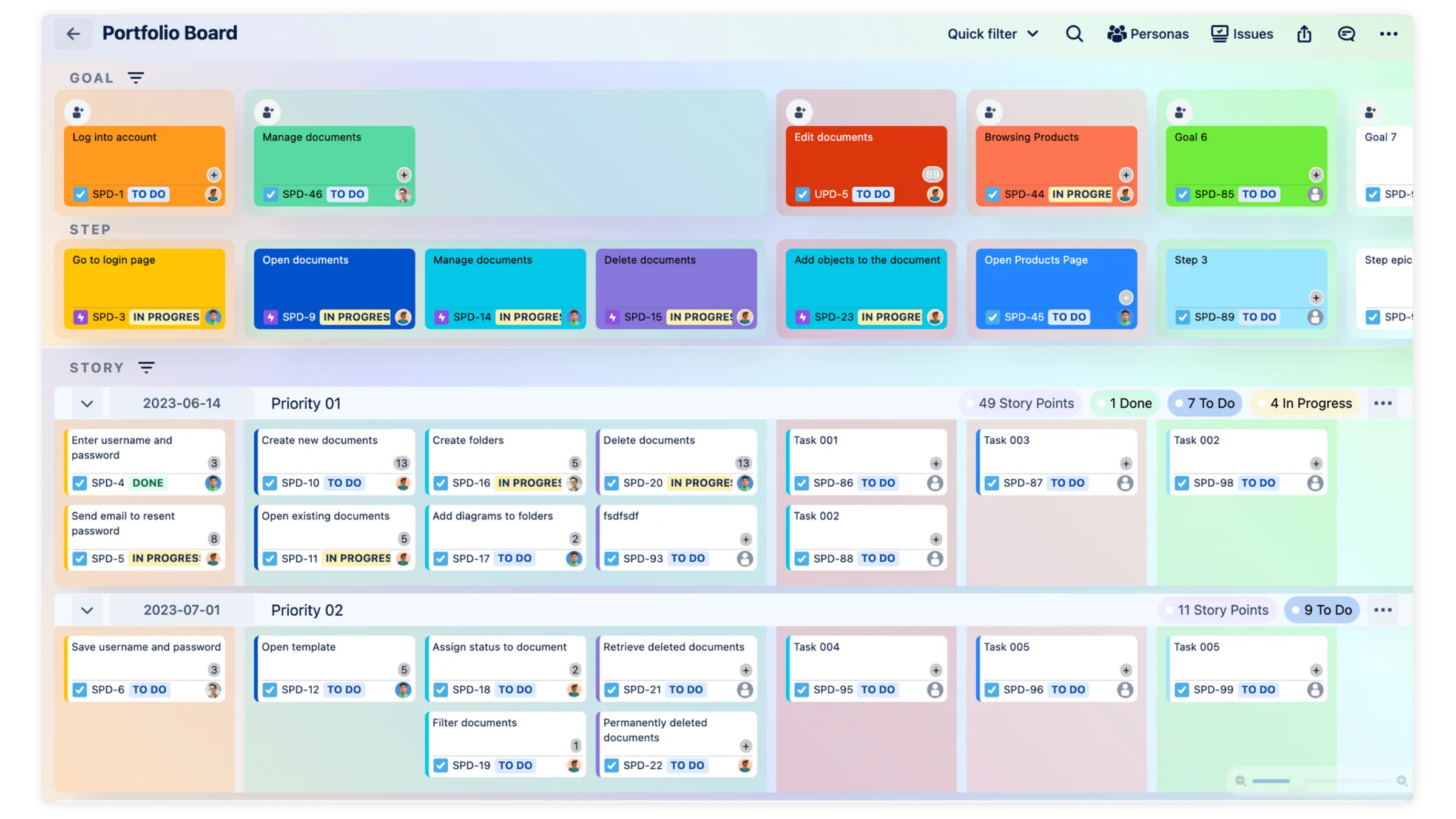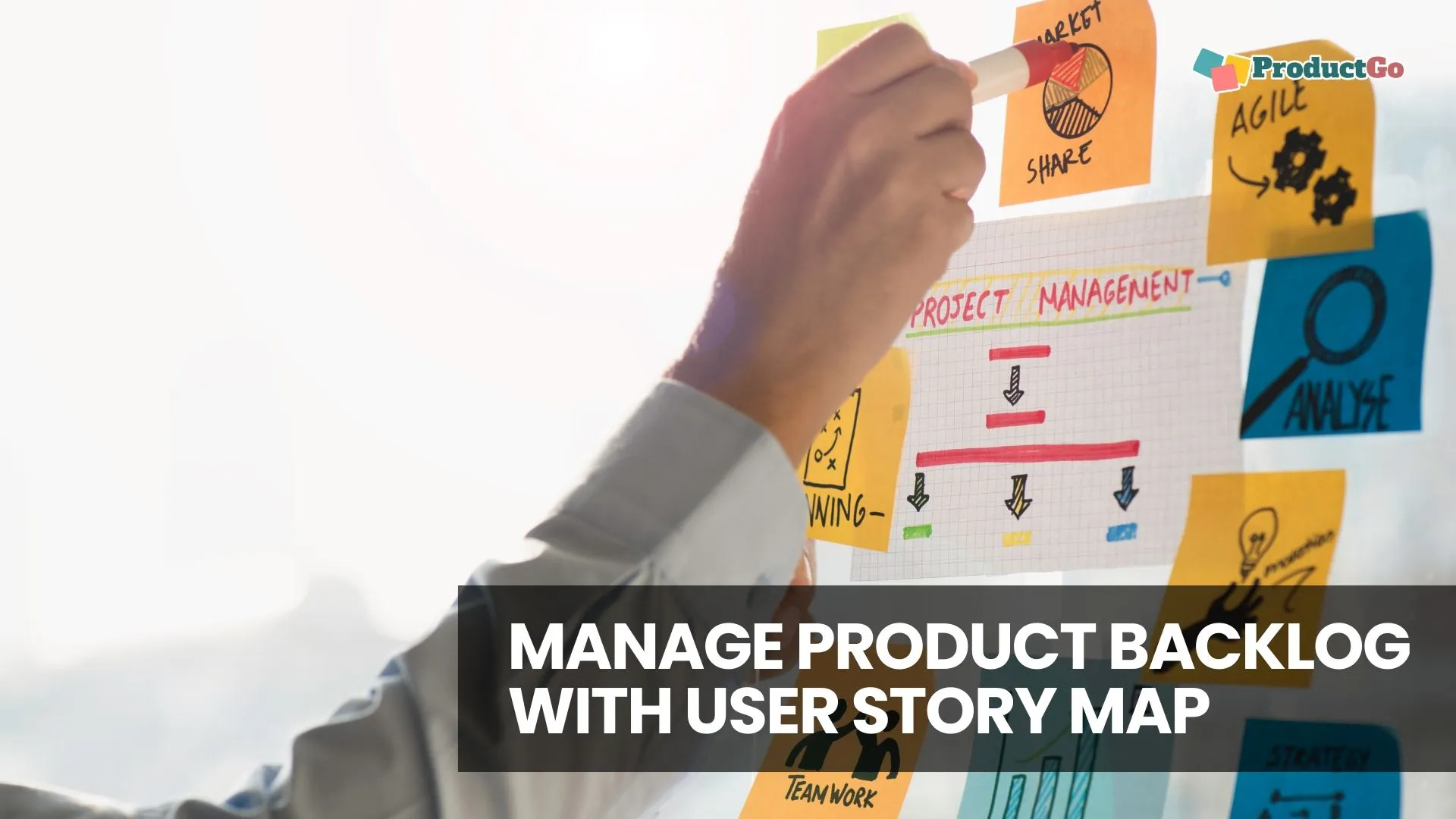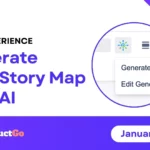Navigating the complexities of product backlog management can often lead to lost details and overlooked project goals. Traditional methods, while structured, often fall short of maintaining clarity and alignment with user needs.
This article explores the transformative power of User Story Mapping, a dynamic approach that enhances backlog management by focusing on user experiences and promoting team collaboration. By integrating User Story Mapping into their processes, teams can achieve more user-centered outcomes and drive project success more effectively.
Table of Contents
- The Challenges of Traditional Product Backlog Management
- Rethinking Product Backlog Management: The Role of User Story Mapping
- The Benefits of Using User Story Mapping
- How to Apply User Story Mapping in Your Projects
- Transforming Your Backlog with User Story Mapping
- Why Choose User Story Mapping? A Decision-Maker’s Perspective with ProductGo
- Final Words
The Challenges of Traditional Product Backlog Management
Managing a product backlog in traditional ways often turns into a complex chore where key details and overarching project goals can easily become obscured. Traditional backlog management involves listing myriad tasks, which are then prioritized based on several factors like business value or urgency. However, this method tends to have significant pitfalls:
- Loss of Context: In traditional settings, user stories often become isolated tasks, losing their connection to the overall project narrative. This isolation can lead to essential information and relationships between tasks getting overlooked, causing misalignment in development efforts.
- Limited Visibility and Collaboration: As the backlog grows, it becomes more challenging for team members to grasp and retain the big picture. This limited visibility can hinder effective collaboration and decision-making, as team members might not fully understand how their tasks contribute to broader project objectives.
- Inflexibility to Changes: Traditional backlogs are often rigid and can become overwhelming to maintain as projects evolve. The static nature of these lists makes it difficult to adapt to changes swiftly, potentially slowing down the development process and response to market or user demands.
These challenges underscore the need for a more dynamic and integrative approach to backlog management, one that maintains the clarity and connectivity of project tasks with strategic goals and user needs.
→ Related article: What is a sprint backlog? How to create one, with examples
Rethinking Product Backlog Management: The Role of User Story Mapping
In product development, the process can often overshadow the people. We get hung up on whether our practices align with industry standards if our user stories are flawlessly structured, and whether our backlog is precisely prioritized. Yet, in our pursuit of perfection, we might overlook the most crucial element: the team.

The reality is that there’s no universal solution to managing a product backlog effectively. Different teams—and even the same team on different projects—might find that certain approaches work better in specific contexts. Therefore, instead of rigidly adhering to “the right way” of doing things, it’s essential to engage with the team to understand their unique challenges and constraints.
This shift towards a more team-centric approach means asking meaningful questions about what obstacles prevent them from building the right product and identifying practices that can remove these barriers. It’s not about enforcing a one-size-fits-all methodology but rather facilitating a collaborative environment where the team can discover and adopt strategies that truly work for them.
User Story Mapping emerges as a powerful solution in this context. It allows teams to visualize the entire product journey from a user’s perspective, linking each user story with its broader context and illustrating how individual pieces come together to form a cohesive whole. This visualization helps bridge gaps in understanding and aligns team efforts toward a common goal.
The Benefits of Using User Story Mapping
User Story Mapping is a transformative tool that redefines backlog management by focusing on the user’s journey, bringing numerous benefits to the development process. Here’s how it enhances team performance and project outcomes:
- Enhanced Clarity and Focus: By mapping out user stories along the user journey, teams gain a clear visual of what they are building and why. This clarity helps in maintaining focus on delivering user value rather than just completing tasks.
- Improved Prioritization: User Story Mapping facilitates a more informed prioritization of tasks based on their impact on the user experience. This ensures that critical functionalities that provide the most value are developed first.
- Better Stakeholder Communication: The visual nature of user story maps makes it easier for stakeholders to understand the product vision and the development process. This transparency helps in aligning expectations and encourages more effective feedback loops.
- Facilitated Onboarding and Collaboration: New team members can quickly understand the project scope and the rationale behind feature prioritization through the visual story maps. It also fosters better collaboration among team members as they can see how their contributions fit into the larger picture.
- Increased Flexibility: With a better overview of the project and its components, teams can adapt more easily to changes. User Story Mapping allows for adjustments to be made with a clear understanding of their implications on the overall project.
By integrating User Story Mapping into your backlog management practices, your team can not only overcome traditional challenges but also drive project success through a user-centered approach that aligns with agile principles.
→ Related article: Optimizing Project Management with User Story Maps: Harnessing AI’s Power
How to Apply User Story Mapping in Your Projects
Implementing User Story Mapping in your project management process involves a few structured steps that can significantly enhance your team’s understanding and execution of the project backlog. Here’s how to get started:

Step 1: Define User Goals and Steps
Begin by identifying the end goals of your users and the steps (or Epics in Jira) they will undertake to achieve these goals. This forms the backbone of your story map.
Step 2: Organize User Stories
Arrange the user stories under each step. This step involves grouping similar stories and placing them in a sequence that reflects the user’s journey through the product.
Step 3: Prioritize and Slice
Once the map is laid out, prioritize the user stories based on their value and necessity. One of the most common ways that Agile teams use for this task is Planning Poker.
Then, slice the map into many swimlanes which conclude releases or iterations, focusing on delivering a usable increment of the product that provides value at each stage.
Step 4: Continuous Refinement and Adaptation
User Story Mapping is not a one-time task but a dynamic tool. Regularly revisit and adjust the map based on feedback and changes in project scope or user needs.
Step 5: Collaboration and Communication
Use the map as a communication tool. It should be visible and accessible to all stakeholders, ensuring that everyone understands the project’s direction and can contribute effectively.
By following these steps, your team can leverage User Story Mapping to gain a more comprehensive and structured view of the project, leading to improved product outcomes and team alignment.
→ Related article: 7 Common Pitfalls when setting up User Story Map in Jira | How to avoid them
Transforming Your Backlog with User Story Mapping
User Story Mapping can dramatically transform how teams manage their product backlogs, leading to more coherent and user-centered product development.
A ‘before’ scenario might show a conventional linear backlog, cluttered and segmented, difficult to prioritize or align with user needs. The ‘after’ scenario, with User Story Mapping, displays a structured, visual layout where every user story is connected to user activity, making it easy to see dependencies and priorities at a glance.
For instance, a software development company could illustrate how they went from frequent scope creeps and missed deadlines to on-time deliveries and enhanced user satisfaction. By visualizing the entire scope and adjusting their focus to user-centered design, they were able to align their development process more closely with user expectations and business goals.
These transformations not only refine the development process but also improve stakeholder engagement and team collaboration, ensuring that every feature developed is strategically aligned with user needs and project objectives.
Why Choose User Story Mapping? A Decision-Maker’s Perspective with ProductGo
Adopting User Story Mapping can be a game-changer for organizations looking to enhance their product development processes. Here’s why decision-makers should consider this approach:
- Strategic Clarity and Alignment: User Story Mapping provides a clear visualization of the product’s roadmap, aligning all team members and stakeholders around a common understanding of user needs and project objectives.
- Enhanced ROI: By focusing development efforts on user-driven priorities, organizations can reduce wasted time on less impactful features, thereby potentially increasing the return on investment.
- Boosted Productivity and Engagement: Teams become more productive when they have a clearer understanding of the tasks ahead. The visual and collaborative nature of User Story Mapping also increases engagement and accountability among team members.
- Tool Integration with ProductGo: For teams using Jira, ProductGo by DevSamurai enhances the user story mapping experience. It integrates seamlessly with Jira, allowing teams to convert their maps directly into actionable user stories within their existing project management framework.

Adopting User Story Mapping with tools like ProductGo not only streamlines project management but also ensures that every feature developed is precisely tailored to enhance user satisfaction and business success.
→ Try out and enhance your team product backlog management process with ProductGo – Agile User Story Map, Portfolio Roadmaps & Persona for Jira
Final Words
User Story Mapping is not just a tool; it’s a strategic approach that brings teams closer to their users and sharpens their focus on delivering real value. By adopting User Story Mapping, organizations can transform their backlog management processes into more agile, flexible, and effective practices.
Whether you’re using tools like ProductGo to integrate seamlessly with Jira or simply seeking to improve team productivity, User Story Mapping offers a clear path to achieving project goals and enhancing user satisfaction. Embrace this technique to not only meet but exceed your project expectations.












